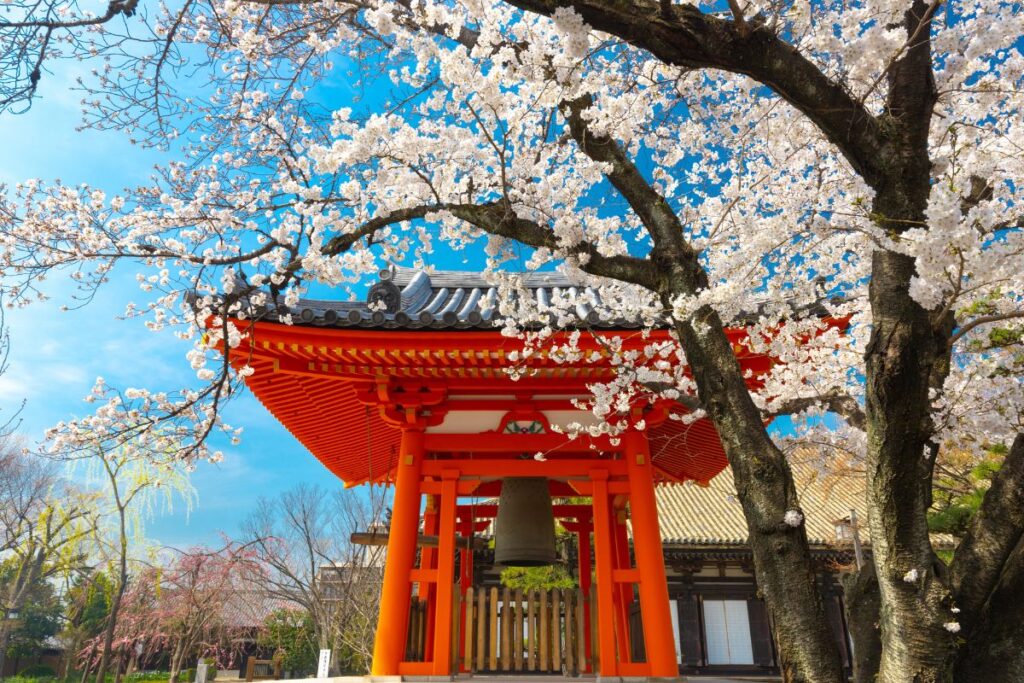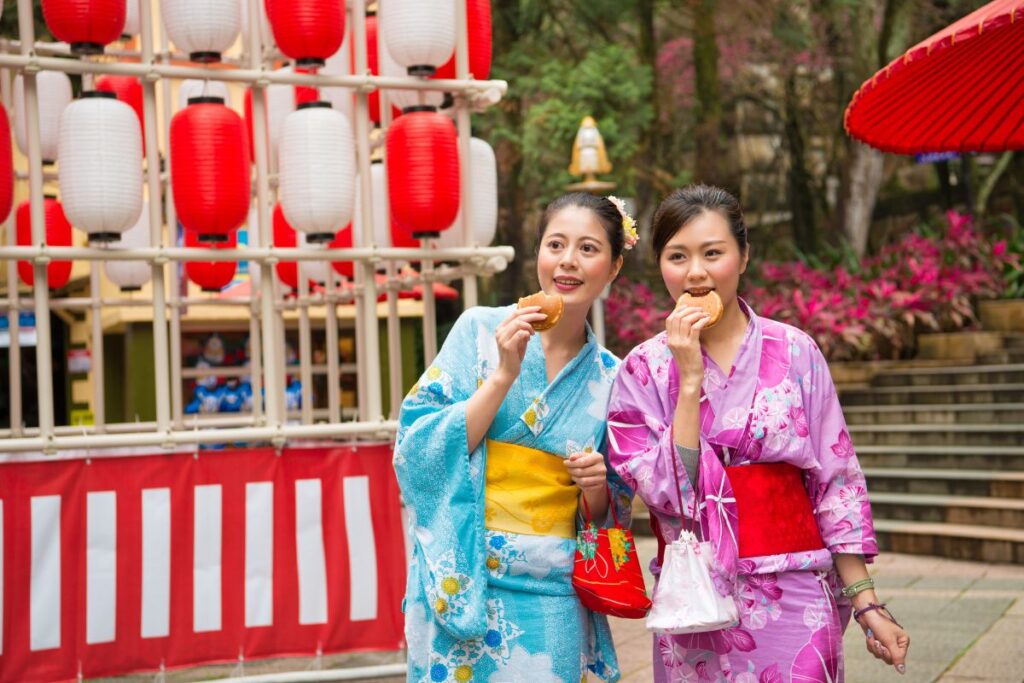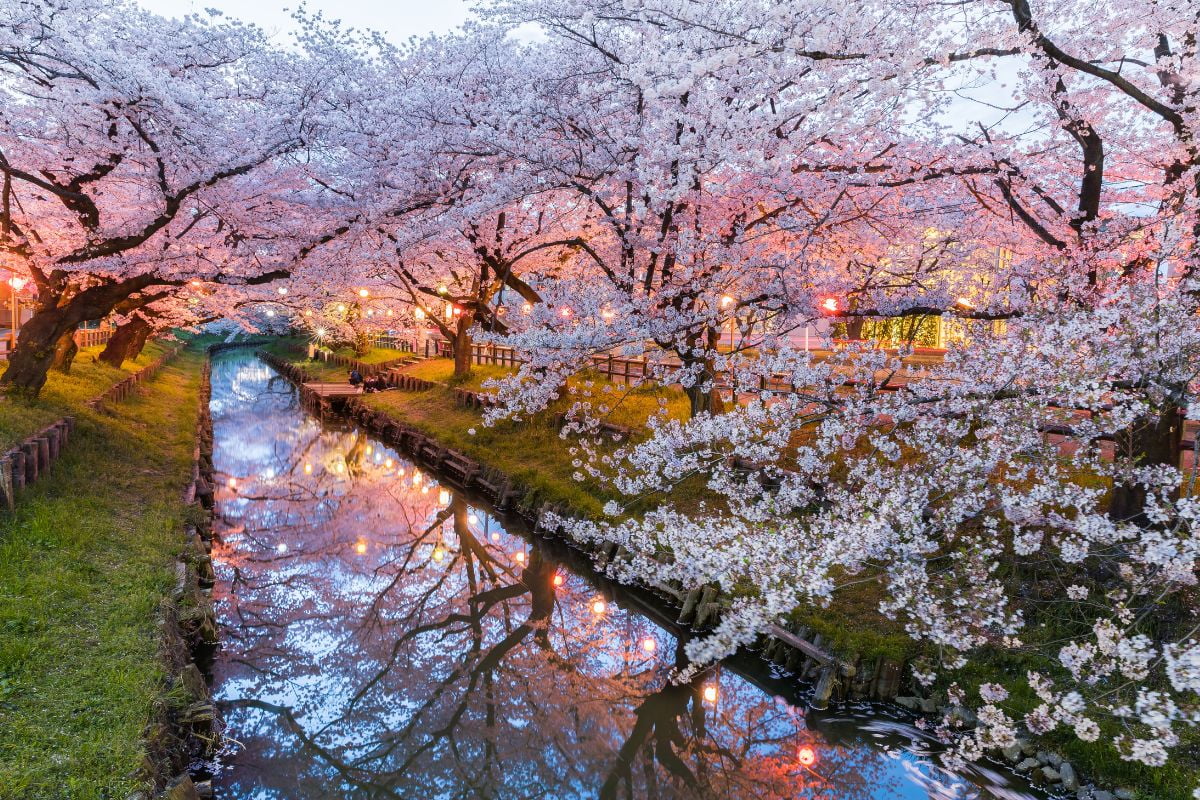Why Travel to Japan?
Why travel to Japan, The answers lie in the fact that Japan attracts travelers with its appealing blend of cultural wealth, breathtaking scenery, and lively metropolitan life. Japan accommodates a variety of interests. It is well-known for its hospitality and fast transportation, which ensures a smooth trip experience. Japan delivers an amazing trip with a combination of tradition and modernity, that makes it a must-see destination on your travel checklist.
Rich Cultural Heritage:
- Japan’s cultural history is a complex blend of centuries-old traditions and everlasting practices. The nation has a remarkable collection of cultural prosperity that is rooted in centuries of history.
- Japan’s cultural environment reflects its great regard for tradition, from the quiet elegance of Shinto shrines and Zen Buddhist temples to the refined traditions of the tea ceremony.
- The enduring attractiveness of ancient arts like as ikebana (flower arrangement), calligraphy, and classic dramatic acts such as Noh and Kabuki exemplify Japan’s cultural past.
- This cultural wealth is not limited to museums and historical buildings but is an essential part of daily life, festivals, and the courteous manners of its people. Exploring Japan’s cultural heritage is a trip through time, revealing the essence of a civilization that peacefully blends the old with the new.

Beautiful Landscape:
- Japan’s scenic landscapes offer a breathtaking tableau of natural beauty, captivating visitors with their diversity and calmness.
- Rising superbly on the skyline, Mount Fuji stands as an iconic symbol, its snow-capped peak contrasting with the lush greenery below.
- Cherry blossom gardens paint the countryside in shades of pink during spring, creating a poetic and momentary spectacle. Attractive traditional gardens, carefully designed with elements like koi ponds and bonsai trees, provide a peaceful refuge.
- Beyond the cities, beautiful mountains and hot springs invite exploration, offering a relaxing escape into nature’s embrace.
- Whether surrounded by the beautiful Arashiyama Bamboo Grove or strolling along the coastline, Japan’s landscapes captivate with their timeless allure, making every sight a work of art.

Culinary Delights:
- Japan offers a diverse range of cuisines that create an ideal mixture of tastes and textures, encouraging foodies to embark on a remarkable culinary exploration.
- Japan is well-known around the world for its mouthwatering food, and its menus extend beyond traditional sushi. Every meal, from the delicate mastery of kaiseki, a multi-course dining experience, to the delicious appetite of ramen bowls at busy noodle shops, is a tribute to careful preparation and a great appreciation for fresh, seasonal ingredients.
- Street food markets showcase the inventive and energetic side of Japanese cuisine with dishes like okonomiyaki (savory pancakes) and takoyaki (octopus balls), providing a sensory meal.
- Japan’s culinary delights are a celebration of flavor, history, and culinary innovation, whether you’re enjoying the delicate artistry of sushi or savoring the simplicity of a bowl of miso soup.

Festivals:
- Japan’s unique diverse festivals embodies the country’s vibrant culture, which are all celebrations of custom, faith, and community.
- Hanami festivities, which showcase the seasonal beauty of flowering sakura, attract both residents and tourists, announcing the entrance of spring with the renowned cherry blossoms.
- Gion Matsuri in Kyoto, one of the most well-known events in Japan, features spectacular floats that parade through the historic streets while fusing beauty with history.
- During the Nebuta Matsuri in Aomori, a captivating show of color and light is created by the carefully constructed paper lantern floats that brighten the night.
- Community gathering for customary dances and ceremonies during Obon, a time for honoring ancestors. These festivals give an opportunity to fully immerse oneself in the vibrant and joyous atmosphere that characterizes Japan’s celebration of its history, in addition to offering a view into the country’s rich cultural heritage.

Efficient Public Transportation:
- The public transportation system in Japan is a shining example of effectiveness and accuracy, setting the standard for smooth travel. The vast network of buses, trains, and subways connects both urban and rural areas, making it simple for visitors to travel .
- The famous Shinkansen, often known as the bullet train, travels at incredible speeds between major cities, exhibiting both speed and modern technology.
- Cities have well-connected subway networks that make it easy to get around major cities. The extensive transportation network is maintained by rapid and dependable bus services, which guarantee accessibility to even the most isolated locations.
- Japan’s public transportation system is known for its speed and careful planning, which not only makes travel easier but also improves the overall effectiveness and comfort of the experience for both natives and tourists.
Cherry Blossom Season:
- In Japan, the “sakura” season, which usually lasts from late March to early April, turns the land into a sea of lovely cherry blossoms.
- This short-lived vision, celebrated with Hanami festivities, represents the transitory beauty of life. Photographers and lovers of the natural world are drawn to parks and streets when certain Yoshino trees blossom, producing an amazing spectacle.
- Beyond only being visually appealing, the season also announces the arrival of spring and the start of the new academic and professional year in Japan, with festivals marking the occasion. Cherry blossom is a unique and wonderful part of Japanese culture that attracts visitors from all over the world.

Anime and Pop Culture:
- Japan’s enormous anime industry is a defining feature of the country’s influence on pop culture worldwide. With its roots in Japan, anime has expanded to become a global cultural phenomenon renowned for its vast range of styles and captivating narratives.
- Japan’s popular culture includes manga, video games, and a variety of subcultures in addition to animation. Tokyo’s Akihabara area, with its specialized stores and cafés, acts as a primary focus for fans. Beyond entertainment, fashion, design, and language are all impacted.
- Famous characters such as Hello Kitty and Pokémon are part of Japan’s global soft power. Japanese pop culture, which is distinguished by a distinct fusion of innovation and tradition, has a lasting impact on audiences worldwide, influencing fashion and the creative environment.
Historic Cities and Modern Metropolises:
- Japan is a fascinating combination of modern metropolises and historic cities that skillfully merge the old with the new.
- With its well-preserved temples, traditional tea houses, and old streets, historic towns like Kyoto take tourists back in time and provide a window into Japan’s rich cultural past.
- On the other hand, modern cities such as Tokyo and Osaka, with their futuristic tall buildings, busy retail centers, and state-of-the-art technology, are dynamic centers of innovation. Japan’s capital city, Tokyo, is an exciting city where neon-lit towers and traditional marketplaces coexist, a reflection of the contradiction that characterizes the country’s urban landscape.
- Travelers are encouraged to discover the various sides of Japan’s urban progress by the distinctive and dynamic environment created by this contrast of history and modernity.
- Japan’s cities provide an interesting journey through time and progress, whether you want to wander through old neighborhoods or navigate the busy streets of modern metropolitan centers.
Politeness and hospitality of Japanese:
- Japan is well known for its extraordinarily high social standards of courtesy and hospitality. A vital component of everyday interactions, politeness reflects an important emphasis on respect and regard for others.
- When in Japan, visitors are frequently greeted with polite gestures like bowing, which can have different meanings depending on the situation. This cultural standard involves not just gestures but also speech, with different degrees of formality depending on the social setting.
- The Japanese culture places great emphasis on the concept of “omotenashi,” or hospitality, which emphasizes showing visitors genuine and unconditional care. The Japanese are renowned for going above and beyond to make guests feel at home and comfortable, whether in formal meetings or informal settings like restaurants or hotels.
- The great attention, true affection shown to guests, and attentive service all demonstrate this dedication to hospitality. Getting instructions from a native or taking part in the traditional tea ceremony are just two examples of how Japan’s hospitality greatly adds to the country’s fascination and favorable impressions that visitors frequently bring back with them.
Frequently asked questions:
| 1. Why should I consider traveling to Japan? |
| Japan offers a unique blend of cultural richness, stunning landscapes, and vibrant metropolitan life, catering to a variety of interests such as history, cuisine, and nature. The country seamlessly combines tradition and modernity for a captivating travel experience. |
| 2. What is Japan’s cultural heritage like? |
| Japan’s cultural history is a blend of centuries-old traditions and practices, visible in Shinto shrines, Zen Buddhist temples, and the refined art of the tea ceremony. Ancient arts like ikebana, calligraphy, and dramatic acts like Noh and Kabuki showcase Japan’s cultural past, which is not confined to museums but ingrained in daily life and festivals. |
| 3. What makes Japan’s landscapes special? |
| Japan’s scenic landscapes offer a diverse and calming experience. Iconic features include the majestic Mount Fuji, cherry blossom gardens painting the countryside in spring, and attractive traditional gardens with elements like koi ponds. Whether in the Arashiyama Bamboo Grove or along the coastline, Japan’s landscapes are timeless works of art. |
| 4. Tell me about Japanese cuisine. |
| Japan offers a diverse culinary experience beyond traditional sushi. From the delicate mastery of kaiseki to the satisfying bowls of ramen at bustling noodle shops, Japanese cuisine celebrates careful preparation and a deep appreciation for fresh, seasonal ingredients. Street food markets showcase inventive dishes like okonomiyaki and takoyaki. |
| 5. What festivals can I experience in Japan? |
| Japan hosts diverse festivals celebrating custom, faith, and community. Hanami festivities highlight cherry blossoms, Gion Matsuri in Kyoto features spectacular floats, Nebuta Matsuri in Aomori showcases color and light, and Obon involves community dances and ceremonies. These festivals immerse visitors in Japan’s vibrant cultural heritage. |
| 6. How is public transportation in Japan? |
| Japan’s public transportation system is known for its effectiveness and accuracy. The extensive network of buses, trains, and subways connects urban and rural areas. The Shinkansen (bullet train) travels at incredible speeds, and well-connected subway networks in cities make it easy to navigate. Rapid and dependable bus services ensure accessibility even to remote locations. |
| 7. When is the cherry blossom season, and why is it significant? |
| The cherry blossom season, or “sakura” season, typically lasts from late March to early April. It transforms Japan into a sea of lovely cherry blossoms, celebrated with Hanami festivities. Beyond its visual appeal, the season marks the arrival of spring and the start of the new academic and professional year in Japan. |
| 8. How does anime and pop culture influence Japan? |
| Japan’s anime industry is a global cultural phenomenon, influencing manga, video games, and various subcultures. Tokyo’s Akihabara area is a hub for fans. Characters like Hello Kitty and Pokémon contribute to Japan’s global soft power, impacting fashion, design, and language with a unique fusion of innovation and tradition. |
| 9. What characterizes Japan’s historic cities and modern metropolises? |
| Japan seamlessly merges historic towns like Kyoto, with well-preserved temples and traditional tea houses, alongside modern cities like Tokyo and Osaka, boasting futuristic buildings and advanced technology. This contrast of history and modernity provides travelers with a captivating journey through time and progress. |
| 10. Tell me about the politeness and hospitality in Japan. |
| Japan is known for its high social standards of courtesy and hospitality. Politeness, expressed through gestures like bowing and varying degrees of formality in speech, reflects a deep respect for others. The concept of “omotenashi” emphasizes genuine and unconditional care for visitors, enhancing the overall fascination and positive impressions of Japan. |
Conclusion:
In summary, Japan’s attraction as a tourism destination is derived from its captivating fusion of vibrant urban life, stunning scenery, and cultural diversity. Japan provides an adventure that skillfully blends the ancient and modern, ranging from the timeless customs embedded in its cultural history to the breathtaking natural beauty of places like Mount Fuji and cherry blossom gardens.
The culinary pleasures, colorful festivals, effective transportation systems, and the peaceful relationships of modern cities and old cities all contribute to the fascination of visiting Japan. When combined with the people’s unparalleled kindness and warmth, visiting Japan promises to be more than just a visual exhibition—it’s also an emotional exploration of a country that values both innovation and tradition. Trips to Japan invite visitors to explore the unique mosaic that characterizes this captivating island nation. They are engaging and life-changing experiences.






